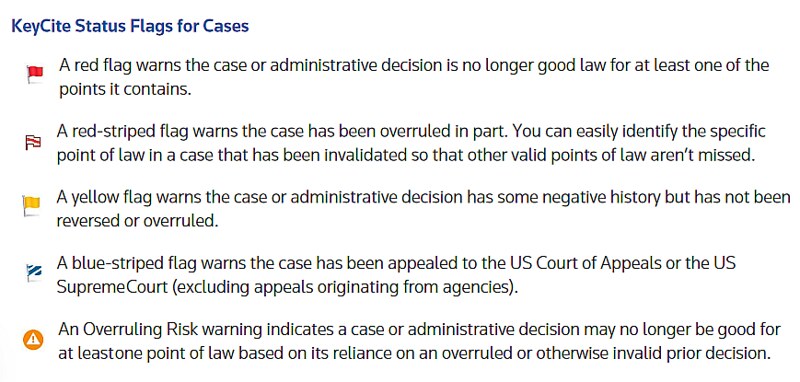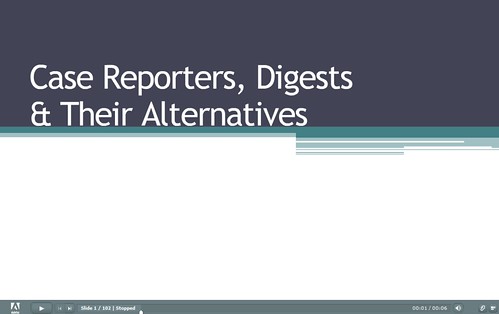The principle of stare decisis asserts that courts "must follow earlier judicial decisions when the same points arise again in litigation." Black's Law Dictionary 1537 (9th ed. 2009). Generally, the lower courts (trial courts) bind the parties involved but no other trial courts and no higher courts. Appellate courts follow their own precedence (through the principle of horizontal stare decisis) and lower courts within their jurisdiction but do not bind other appellate courts at the same or a higher level.
Many, but not all, jurisdictions call their court of last resort the Supreme Court. It is always a good idea to research your jurisdiction's court system in order to see the hierarchy.
At the top of the court hierarchy is the Ohio Supreme Court which has a Chief Justice and six Justices. It has original jurisdiction in select cases. It is the court of law resort on state constitutional questions and questions of public or great general interest. It accepts appeals from the Board of Tax Appeals, Public Utilities Commission and death penalty cases. The Court of Appeals is the next level of court. There are twelve appellate districts and decisions are made by three-judge panels unless reviewing a case en banc. The Court of Appeals provides appellate review of the judgments of the common pleas, municipal, and county courts. It also hears appeals from the Board of Tax Appeals, and has original jurisdiction in select cases. Below the Court of Appeals are the Courts of Common Pleas, which are in each of the 88 counties. The Courts of Common Pleas are divided into a General Division, which covers civil and criminal cases and appeals from most administrative agencies; Domestic Relations Division, which covers divorces and dissolutions, and child support and child custody; Juvenile Division, which covers offenses involving minors and most paternity actions; and the Probate Division, which covers decedent's estates, mental competency, adoptions, and marriage licenses. In parallel with the Courts of Common Pleas, are the Municipal and County Courts. They cover misdemeanor offenses, traffic cases, and civil cases up to $15,000. Also in parallel is the Court of Claims. Judges for the Court of Claims are appointed by the Chief Justice. They hear suits against the state for personal injury, property damage, contracts, wrongful deaths, and appeals from decisions made by the attorney general on claims allowed under the Victims of Crime Act. Mayor’s courts are not a part of the judicial branch of Ohio government and are not courts of record but a person convicted in a mayor’s court may appeal the conviction to the municipal or county court. The Mayor's Courts hear violations of local ordinances and traffic laws.
Retrieving a case by legal citation is the easiest and fastest way to get the specific case to which the citation refers. In order to find a case by citation you need to have three basic components: (1) the volume number of the reporter that case was found in (2) the abbreviated name of the reporter and (3) the page number the case begins on in the reporter.
Suppose our citation was for 966 N.E.2d 915 and I wanted to find this case in the print reporter. I would first find the North Eastern Reporter in the UC Law Library print collection. Then I would find the 2nd series within that. Next I would look for volume 966 and finally the page number 915.
Other places that you can use the citation to find a case are:
Headnotes are summaries of the issues in a case. They are not actually part of the opinion. Each headnote is numbered. Headnotes in a West reporter address a specific point of law in the case, including the relevant facts regarding that point of law.
Headnotes in West reporters are written by the editors. Lexis headnotes are a little different from Westlaw headnotes. Lexis headnotes are still organized by broad topics and then progressively subdivided by narrower subjects, but Lexis headnote subjects tend to be broader concepts than the West key numbers. Also, Lexis headnotes do not editorialize, they actually lift language straight from the text of the case.
The Lexis headnotes are numbered but even though this is the same case, the headnotes are not the same as in Westlaw. The headnotes are completely different. Here, we still have a headnote that deals with the elements of Intentional Infliction of Emotional Distress. It is headnote number 5. We also do not have any key numbers. Just topics. We can find more cases on this topic by clicking on the topic links. If we want a broader search, we can use the intermediate levels, for example, we could search Intentional Infliction of Emotional Distress rather than the specific Elements beneath that. A search on any intermediate level will bring up results for all the more specific levels below it.
 In the image above, we have headnote number 5 which deals with the burden of proof for an intentional infliction of emotional distress claim. There are two larger subject topics assigned to it: Evidence and Torts. Under each larger subject topic there are subtopics. The narrowest topic under Evidence is the Allocation (for burden of proof). The narrowest topic under Torts is Elements (for the intentional tort of intentional infliction of emotional distress).
In the image above, we have headnote number 5 which deals with the burden of proof for an intentional infliction of emotional distress claim. There are two larger subject topics assigned to it: Evidence and Torts. Under each larger subject topic there are subtopics. The narrowest topic under Evidence is the Allocation (for burden of proof). The narrowest topic under Torts is Elements (for the intentional tort of intentional infliction of emotional distress).
If you want to see the topic and key numbers in Westlaw headnotes, you may have to click the Change View link at the top of where the headnotes begin.
In the image above, we have headnote number 6 which deals with what is required to prove a claim of intentional infliction of emotional distress. Headnote 6 has been assigned the topic of damages and the key number of 57.21. The key number assigned to a particular headnote is always the last and narrowest key number assigned.
There are several methods to find cases that interpret rules.
Below are some resources.
 Federal Rules Digest
Federal Rules Digest
 Moore's Federal Rules Pamphlet
Moore's Federal Rules Pamphlet
Offers federal practitioners the full text of the Federal Rules, as well as Advisory Committee notes and a mini-treatise with analysis and case annotations. Volume 1 covers the Federal Rules of Civil Procedure, Federal Rules of Appellate Procedure, Rules of the Supreme Court of the United States, and Rules of Procedure of the Judicial Panel on Multidistrict Litigation. Volume 2 covers the Federal Rules of Evidence. Volume 3 covers the Federal Rules of Criminal Procedure, Habeas Corpus Rules, and Official Forms. Volume 4 covers the Judicial Code
There are two main case law citators to verify the status of your case - on LexisNexis, it is Shepards and on Westlaw it is Keycite. Keyciting and Shepardizing are also a method for finding other cases and secondary sources relevant to your topic.
There are differences between the citator symbols used by Westlaw and Lexis, but as a general rule, in either Westlaw or Lexis cases with a red flag or red stop sign may no longer be good law and should not be relied upon without doing further research. Similarly, cases with a yellow flag or yellow triangle should be used with caution because they may have been distinguished by other court rulings. Remember, that you need to take into account the jurisdiction of your case and the cases citing your case in order to determine if your case is still good law.


Please note that Lexis, Westlaw, and Bloomberg Law are only available to law students and law faculty.
 Available to Law Students only (see a reference librarian if you do not have a CALI activation code).
Available to Law Students only (see a reference librarian if you do not have a CALI activation code).
University of Cincinnati Libraries
PO Box 210033 Cincinnati, Ohio 45221-0033
Phone: 513-556-1424
University of Cincinnati
Alerts | Clery and HEOA Notice | Notice of Non-Discrimination | eAccessibility Concern | Privacy Statement | Copyright Information
© 2025 University of Cincinnati
